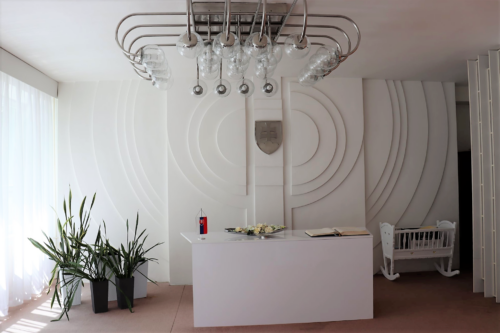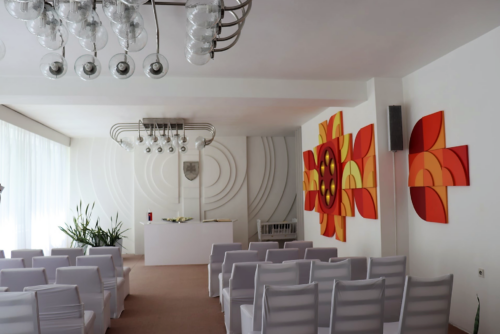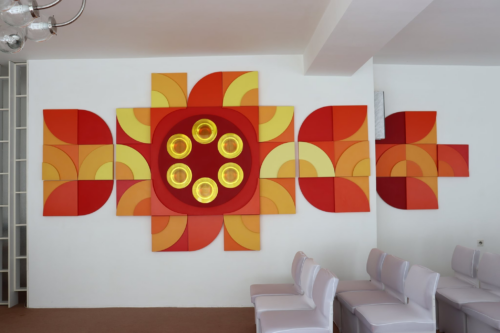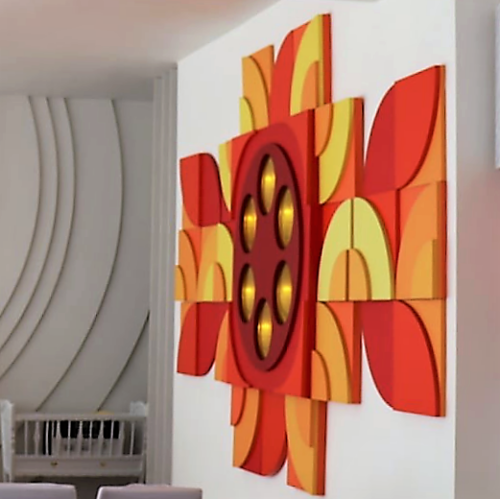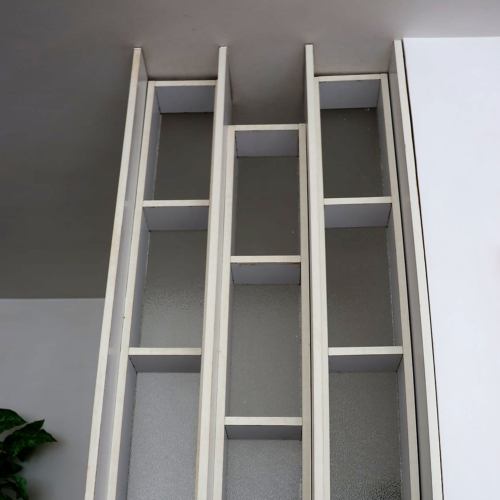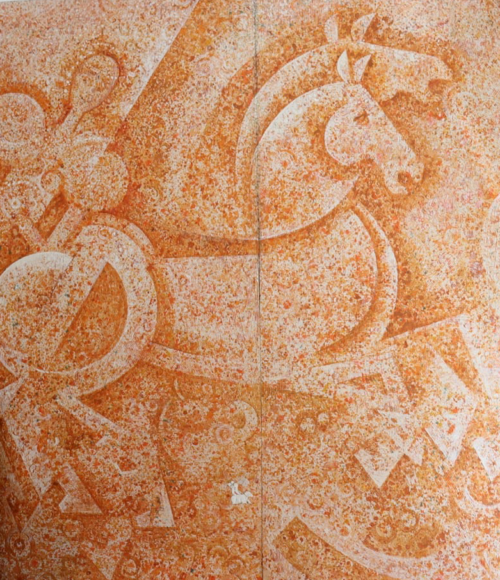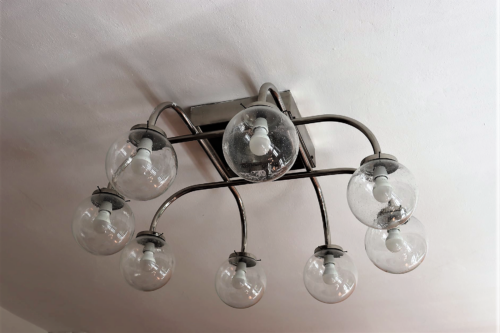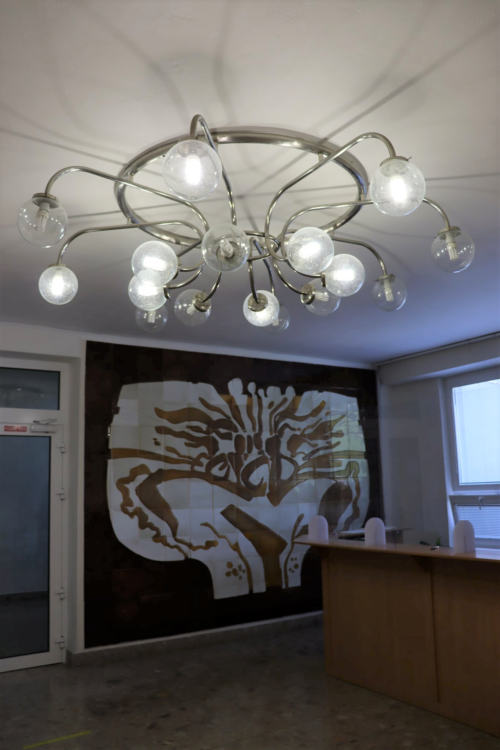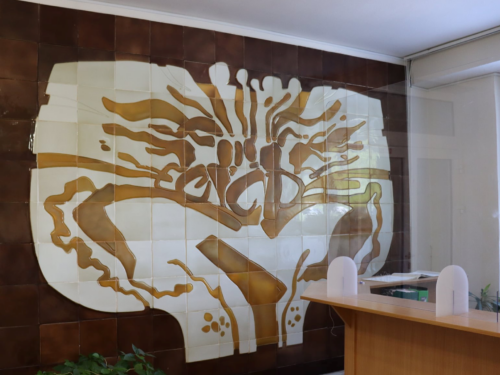Ceremony hall – Municipal office
Category: Administrative institutions, Ceremony houses
Interior design: Matej Turcer
Works of arts: Milan Dobeš, Svetozár Králik and unknown authors
Location: Námestie odborárov 10, Tlmače – Lipník
Built in years: 1970s
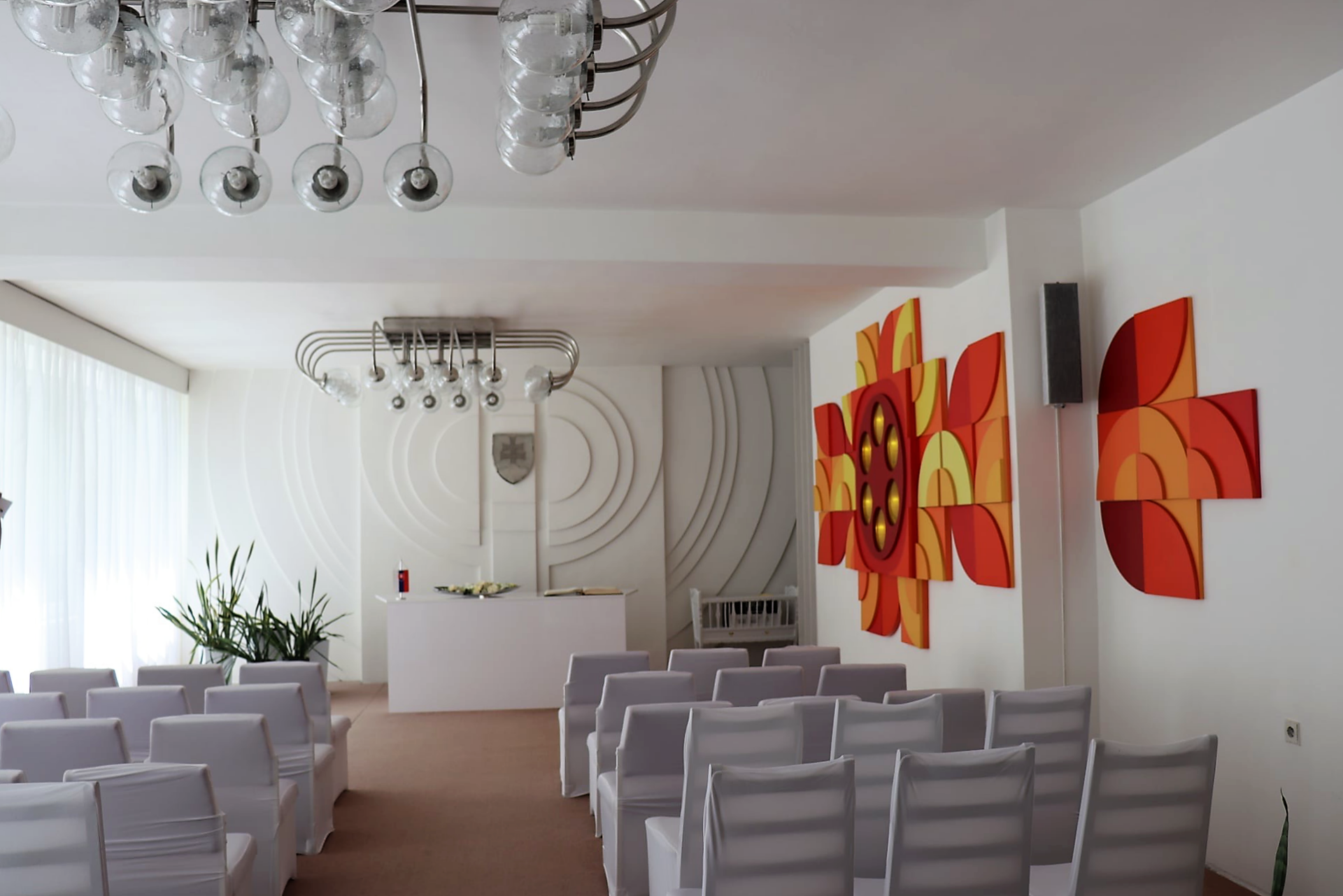
Designing ceremonial halls or ceremony buildings has always presented a great challenge for architects, designers and fine artists, allowing authors to be more creative in their respective fields, be it architecture, interior design or fine arts. Surely, one of such creations is the ceremonial hall hidden from the public eye in an architecturally insipid building of the Tlmače municipal office.
Except for minor adjustments, the building interior and its parts have been preserved in almost the original condition. “The hall’s floor is carpeted and gives the interior environment a touch of a luxury. It is impossible to define whether the carpet is original, since there are no available records. Historical documents mention paravanes under windows; however, nowadays these were replaced by semi-translucent white curtains to embellish the atmosphere in the hall. A divider made of frosted glass and chipboard is an original, preserved interior element separating the area intended for preparations before the ceremony.” [4]
The types of utilised furniture correspond with the wedding hall equipment of the given era. A ceremonial table, adjacent side table, chairs, decorative jardinières, and other period elements were stable pieces of the furnishings. “Original, series-produced chairs are currently adorned with white covering clothes. They were fabricated by Tatra Nábytok, a famous furniture manufacturer. The ceremonial table is one of the most important elements in the ceremony hall’s interior. Geometrically-shaped tables, attracting people’s attention through their unusual shapes, were a typical feature of the period. The ceremonial table in Tlmače is no exception. A small detail represented by an enlarging table-top plate imparts to it significance and impressiveness. It is assumed that the table is original and that it was Matej Turec himself who installed it in its place. Yet, we can neither confirm nor disprove whether he also authored the work”. [4]
Areas of the foyer, ceremony hall and office are decorated by geometrically shaped luminaires bearing features of the post-war design and Bauhaus style. [1] While the majority of interiors from this period declare a strong link between the lighting elements and ceilings, here they are featured as unique artistic solitaires impressively outstanding from a visual neutral background of the ceiling plane. The visitors are thus attracted to the luminaires themselves and dynamically changing graphical figures played by the shadows.
Inseparable part of the period ceremonial halls were works of art understood as prominent attributes of expression, introducing artistic dimensions and emotions into the interior space. The Tlmače Town Hall comprises several such works of art, whose authors and history would be concealed from the public, were it not for the passionate research of art historian Sabina Jankovičová. The front wall is adorned by a drawn-plaster relief by Milan Dobeš, the side wall is decorated by a colour-strong relief symbolising the union of rings and thus of the lives of two people. “The future of the colour relief by Dobeš was uncertain until research was conducted, when the municipal office’s employees learned about this author and decided to keep his work. The main reason for contemplating the removal of this artwork was its conspicuous colour.” [1, 4] The office, probably the former preparation room, contains a large-scale painting by Svetozár Králik, today partially covered up. The collection of artwork also comprises a ceramic wall by an unknown author, decorating the entrance lobby interior. [2]
Re-discovered artwork and period artefacts belonging to the ceremonial hall are an example that even forgotten interiors in peripheral regions of Slovakia may contain some part of cultural history which is worth remembering and preserving for future generations.
- Jankovičová, Sabina: Obradné siene. [Ceremonial halls.] In: Designum, 2008.
- Jankovičová, Sabina: Ako ďalej. Sobášne siene na Slovensku do roku 1989. [What next. Wedding halls in Slovakia before 1989.] Web portal of Slovak Design Centre. Available at: https://scd.sk/clanky/ako-dalej-sobasne-siene-na-slovensku-do-roku-1989/
- Barát, Andrej: Historička: Ide sa spisovať umenie, ktoré sa ignorovalo 30 rokov. [A historian: Art that has been ignored for 30 years is to be catalogued.] Pravda web portal. Available at: https://zurnal.pravda.sk/rozhovory/clanok/590655-historicka-ide-sa-spisovat-umenie-ktore-sa-ignorovalo-30-rokov
- Prišťáková, Michaela: Obradná sieň, Tlmače. [Ceremony hall in Tlmače.] Seminar paper for the Public Interior course, Faculty of Architecture and Design STU Bratislava, Summer Term 2021–22
Sabína Jankovičová
Michaela Prišťáková
